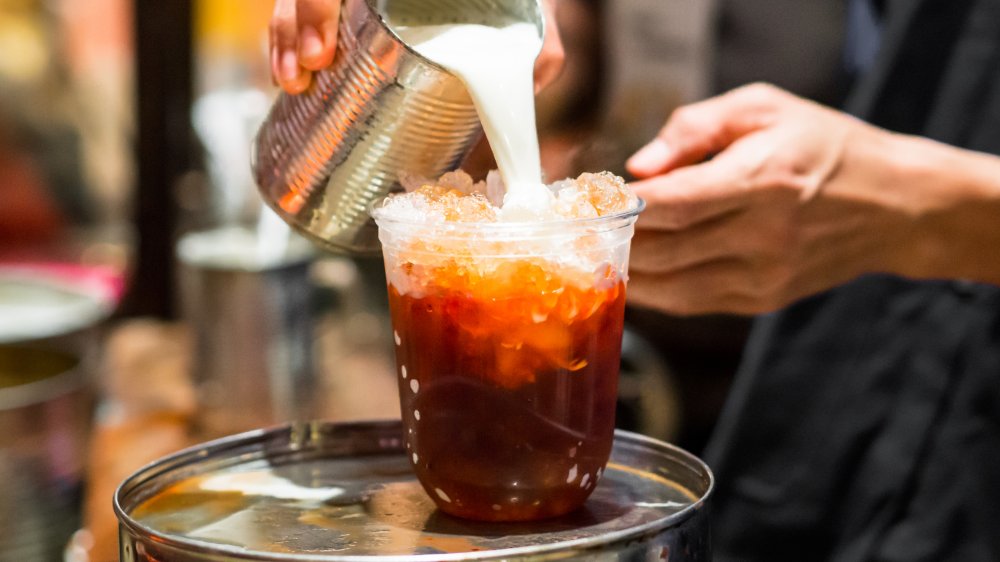You've Been Making Iced Coffee Wrong This Whole Time
As the weather finally gets hotter, most of us are looking to swap our usual piping-hot cup of Joe for its cooler, more refreshing cousin. Iced coffee seems like the easiest thing in the world to make and if you're considering whether you should reheat that last cup or toss it over ice, you're definitely best advised to do the latter. But there's an art to making a great cup of iced coffee just as there is to making a great hot mug, too.
And again, similar to how there are tons of different varieties of hot coffee and even more ways to prepare them, not all iced coffee is the same. More often than not, it has to do with the preparation more than the beans. If you've just been dumping coffee over ice and considering it done, brace yourself, because there's a lot more to making iced coffee than just temperature.
There's more than one way to make iced coffee
As J. Park Brannen of Counter Culture Coffee told Food and Wine, there are actually three methods of making iced coffee. The slow, cool method, employed by the likes of McDonald's and Starbucks, is the simplest and involves brewing hot coffee, letting it cool down, and then adding ice. However, this method exposes the coffee to the air for the longest time, causing the highest level of oxidation and leading it to taste bitter.
Cold brew is the go-to for boutique breweries and is hugely popular at the moment. Per Brannen, it's a, "process in which you add room temperature water to coarsely ground coffee, and let it steep from six to 24 hours." The concentrated coffee is then diluted with cold water based on strength preference, resulting in a smoother taste.
Finally, the Japanese method involves adding ice to the carafe as the coffee brews, before filtering it directly over more ice, per Spoon University. It's suggested this method brings out the flavors more than the others.
Water is the most important ingredient in iced coffee
As Chad Moore, Starbucks' Global Coffee Engagement specialist, told Delish, the most important thing to remember when making iced coffee is to use less water than when you make it hot. "You want [the coffee] to be stronger because you're going to add ice, and that will melt," he advised. Ideally, you should be using four tablespoons of ground coffee for every six ounces of water. You can use a pour-over cup or a French press to do so. And always use fresh, filtered water.
"Coffee is 98 percent water, so it makes a huge difference in how the drink tastes," Moore noted. His choices for the best fit for iced coffees are Latin-American or African beans, because they're crisper and more refreshing. But it's all about preference, so whichever variety you choose, ensure you're patient, find the method best suited to you, and use the correct amount of water above all else.


